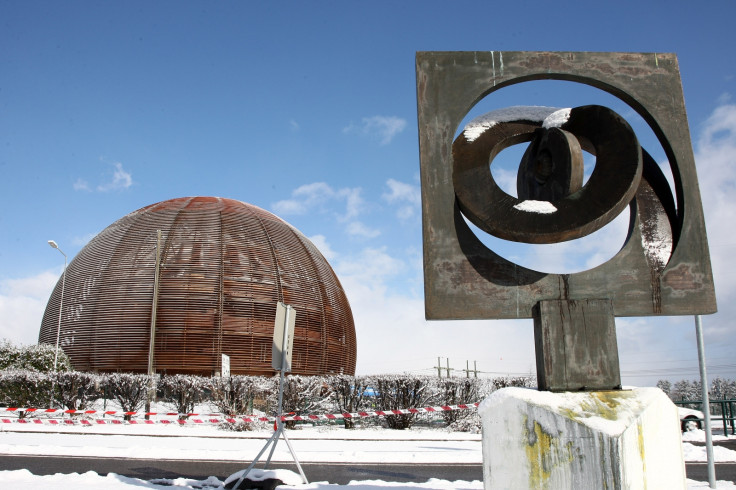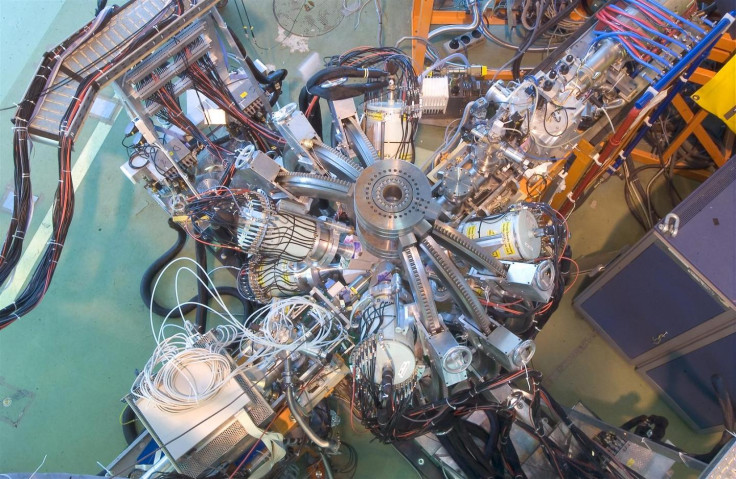Scientists plan to capture antimatter and drive it around in a van to shed light on collapsed stars
Scientists at Cern will study the immense energy in neutron stars that condenses an object the size of the Sun into an area the size of a city.

Scientists plan to capture antimatter in a jar and drive it in a truck to a lab in a bid to find out what super-dense stars are made of, in a scene strikingly similar to a Dan Brown thriller.
In the American author's 2000 thriller Angels & Demons, a team of physicists at Cern create a large amount of antimatter only for the phial to be stolen by Illuminati henchmen who want to destroy the Vatican.
But now in real life researchers at Cern, Europe's nuclear exploration centre, are working on plans to help them understand what happens at the core of incredibly dense neutron stars.
These stars are able to squeeze more mass than the Sun into an area the size of a city.
Nasa is investigating whether the immense energy that condenses these stars could be harnessed to accelerate a starship to a large fraction of the speed of light.
Currently, doctors often use the radiation that is given off when electrons smash into antimatter to scan patients' bodies for signs of disease.
Antimatter is the mirror image of normal matter, and enormous amounts of energy can be released when the two are smashed together.
Absolute zero
Alexandre Obertelli, who leads the Antiproton Unstable Matter Annihilation (Puma) experiment at Cern, and his team of scientists plan to use magnetic and electric fields to trap a cloud of antiprotons in a vacuum.
The antiprotons will be kept in a cylinder roughly the size of a tin of baked beans and stored in a vacuum while cooled to four degrees above absolute zero.
The whole apparatus, including the freezing unit, will stand at 1.5m tall and will weigh around a tonne.

It will then be driven 400m across Cern in a lorry to the site of a neighbouring radioactive Ion Beam, that produces rare, radioactive atomic nuclei that decay too quickly to be moved.
The team at Cern say we shouldn't be worried if the lorry tips over and the cylinder breaks, allowing antimatter to react with matter. They say the energy released from this amount of material, would barely be enough to blow up an apple.
Once moved, antimatter will be fired at these nuclei in a bid to understand how these particles behave at the sub-atomic level.
Halos and skins
This can lead to unusual configurations of radioactive nuclei, such as neutron 'halos', with neutrons orbiting around the nucleus, or 'skins', with a layer of neutrons around the outside of the nucleus.
Physicists hope the study of these unusual structures will provide clues as to how mysterious super-dense neutron stars are formed.
"One of the reasons understanding neutron 'skins' and 'halos' is so important is to make the most of astrophysical observations," Panagiota Papakonstantinou, a nuclear physicist at the Institute for Basic Science in Daejeon, South Korea, told Nature.
The Puma team at Cern plan to capture a record 1 billion antiprotons, which is a 100 times more that has been stored in any previous experiment.
The group developing the portable trap say it will take around four years construct, with the first experiments taking place in 2022.






















